Are you looking to build a low-maintenance garden or flowerbed, and do you intend to add a few perennial shrubs? It is not a bad idea, as by doing so, you would be adding height and structure to a perennial landscape or creating a hedge. As such, you can go for hassle-free plants by picking the best perennial shrubs that are easy to grow.
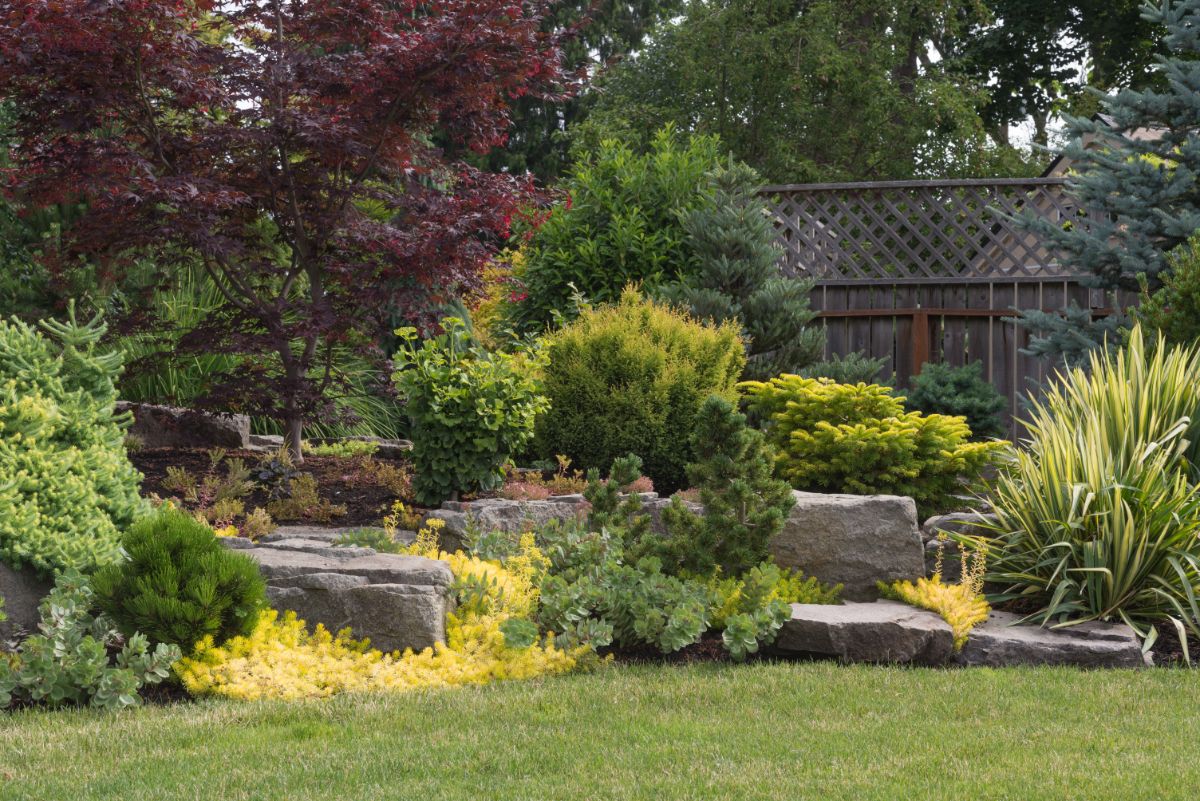
These shrubs tend to bounce back when neglected. Meanwhile, they are plants that require a complicated care routine of watering, feeding, deadheading and clipping that we all assume will keep them healthy.
So, whether you're looking to put a new shrub bed or plant more shrubs into an existing garden, easy-to-grow perennials are the perfect fit.
These low-maintenance shrubs provide attractive natural plant forms, which do not necessarily need pruning, should be free-flowering, tolerant of various growing conditions, and pest resistant.
These shrubs include Weigela, Forsythia, Hydrangea, Summersweet, Rose of Sharon, and many more, which we will discuss below!
Jump to:
- What are Perennial Shrubs?
- Perennial Shrubs That are Easy to Grow
- 1. Weigela (Weigela Florida)
- 2. Golden Bell Forsythia (Forsythia suspensa)
- 3. Hydrangea (Hydrangea macrophylla)
- 4. Summersweet Clethra (Clethra alnifolia)
- 5. Rose of Sharon (Hibiscus syriacus)
- 6. Beauty Bush (Kolkwitzia amabilis)
- 7. Skip Laurel (Prunus laurocerasus 'Schipkaensis')
- 8. Flowering Currant (Ribes sanguineum)
- 9. Mountain Laurel
- 10. Darwin's Barberry (Berberis darwinii)
- 11. Puget Blue (Ceanothus)
- 12. Bluebeard Caryopteris (Caryopteris clandonensis)
- 13. Butterfly Bush (Buddleja)
- 14. Annabelle Hydrangea (Hydrangea arborescens 'Annabelle')
- 15. Bottlebrush Buckeye (Aesculus parviflora)
- 16. Daphne Odora (Aureomarginata)
- 17. Red Robin (Photinia)
- 18. Chinese Paperbush (Edgeworthia chrysantha)
- 19. Maejima Daphne (Daphne odora 'Maejima')
- 20. Viburnum (Viburnum opulus)
- 21. Camellia (Camellia japonica)
- 22. Rhododendron (Rhododendron ferrugineum)
- 23. Oak-Leaf Hydrangea (Hydrangea quercifolia)
- 24. Oregon Grape (Mahonia aquifolium)
- 25. Sea Berry (Hippophae rhamnoides)
- How to Grow and Care for Perennial Shrubs
- Frequently Asked Questions
- Conclusion
What are Perennial Shrubs?
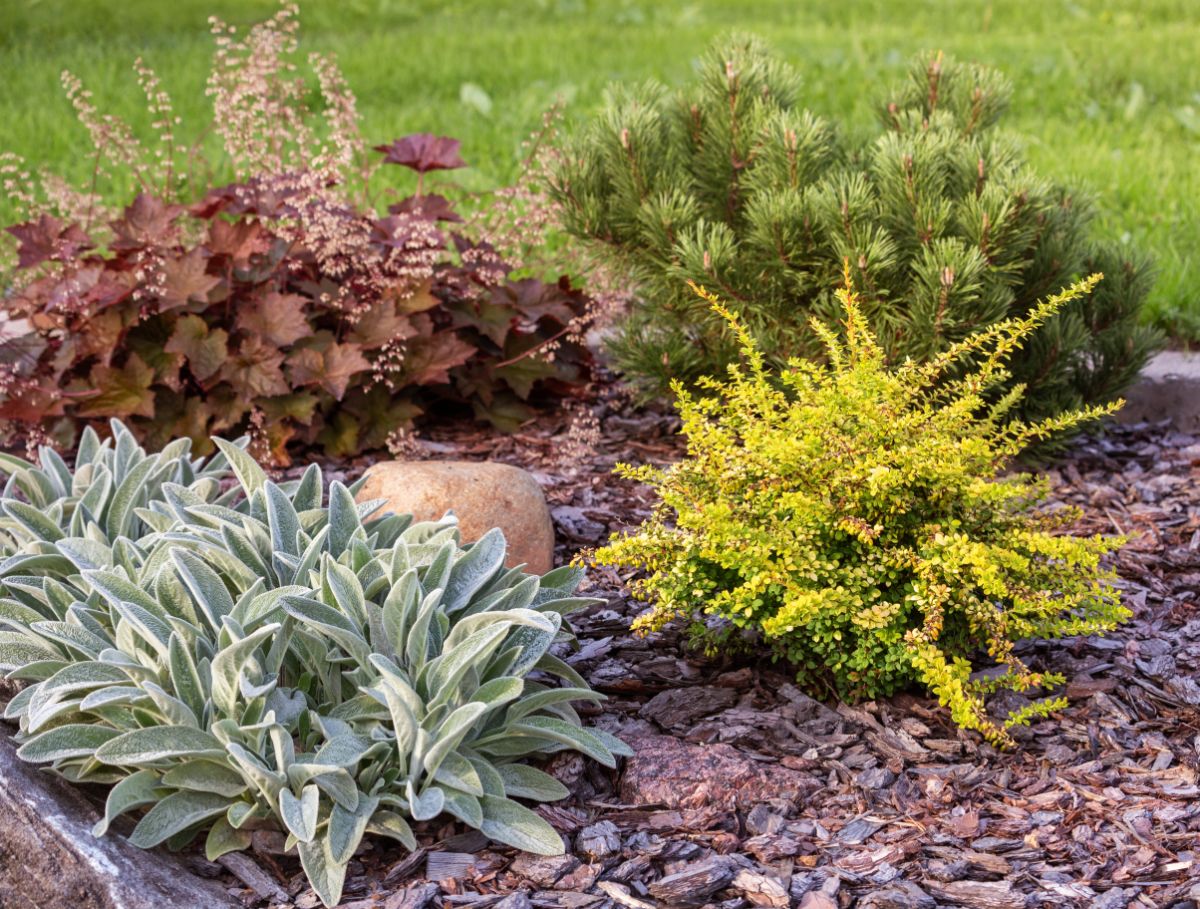
Easy-to-grow perennial shrubs are simply those plants that don't require much difficulty growing. In other words, these plants can be fast-growing plants that need a little more attention and care than the rest, yet in general, can survive by themselves and will not always require much pruning, fertilizing, or others.
Perennial shrubs are numerous and of different varieties, and they all add color to every landscape and are used as a backdrop for any perennial garden. Among these innumerable varieties are perennial shrubs that are easy to grow and maintain.
So, if you think you lack the patience to grow a lovely garden, you should rethink, as you'll always find numerous easy-to-grow blooming shrubs that wouldn't take much effort from you to flourish. However, if you want your shrubs to grow well and bloom as required, ensure you choose the suitable shrubs for your soil type, sun conditions, and region.
Whenever you encounter challenges while growing a lovely landscape, it doesn't mean you lack the skills to do so, but it is always a lack of time. Several plants are fussy and require ongoing attention, while others are okay on their own, provided that you give them the right growing conditions and environment.
Perennial Shrubs That are Easy to Grow
1. Weigela (Weigela Florida)
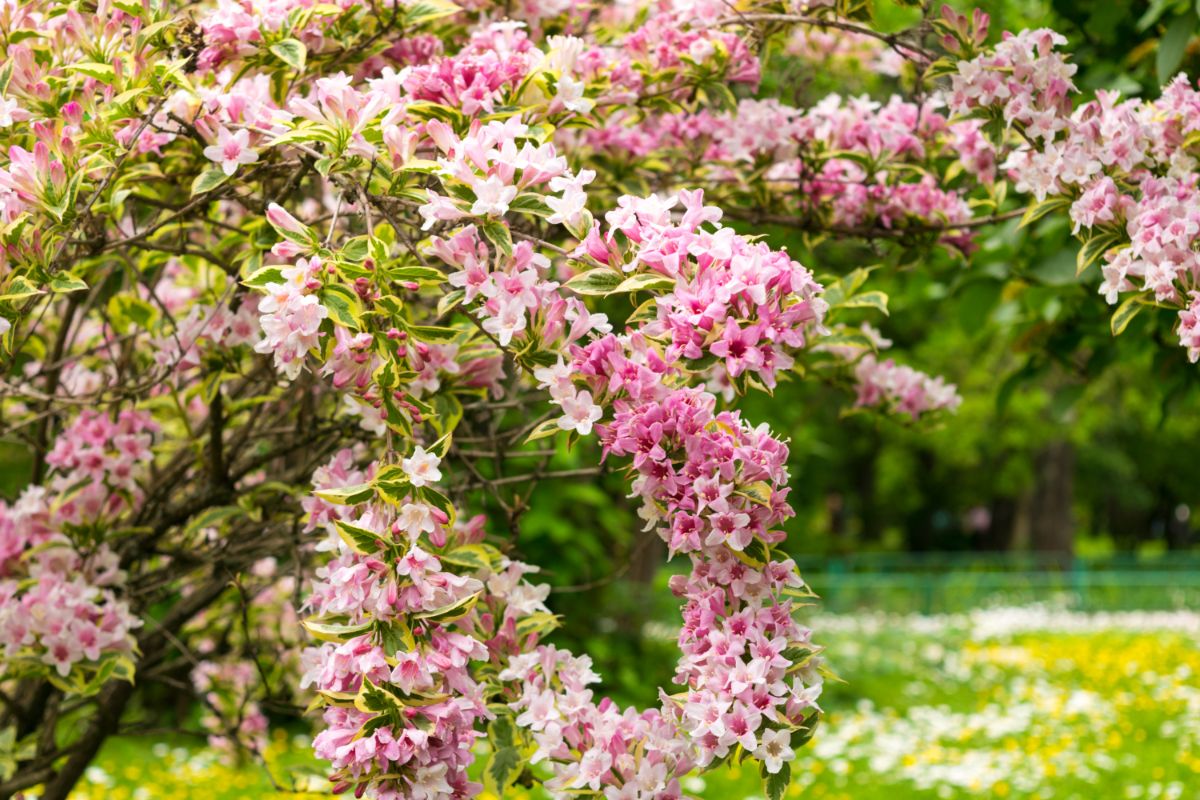
One of the best perennial shrubs that are easy to grow is Weigela. It originated from China and offered a charming garden prospect that will beautify your garden and make it stand out. This outstanding shrub is most famous for its prolific bloom production and straightforward nature.
It is hardy to -30 degrees Fahrenheit and can grow up to 6 to 10 feet tall while spreading up to 9 to 12 feet wide. From April to June, Weigela produces beautiful pink tubular flowers, which draw hummingbirds.
However, pruning is necessary immediately after the shrub has completed its flowering since it blooms on branches planted the previous season.
Weigela thrives most under the full sun, even though it can survive a little shade. It is also resistant to pests and diseases. Some of these plants feature wine-red foliage or variegated foliage. Because of its arching growth habit, pruning this plant is unnecessary.
2. Golden Bell Forsythia (Forsythia suspensa)
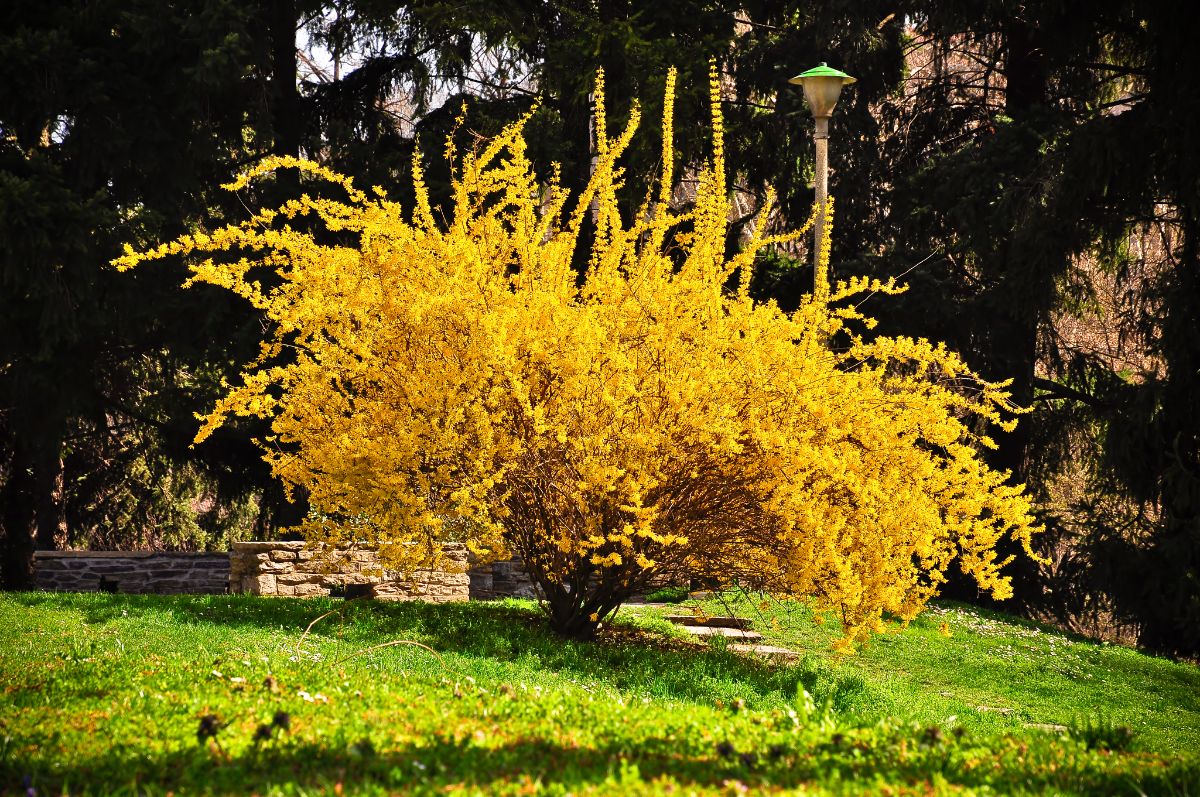
If you are looking for a perennial shrub that will not prove too challenging to grow and, at the same time, brighten your garden, then you should look no further than Golden Bell Forsythia.
This lovely shrub produces elegant bright, and showy flowers during early spring before the emergence of its foliage or any other plant.
It grows straight and arching, making the landscape a lovely sight that even attracts birds and pollinators like butterflies.
Forsythia is a giant perennial shrub that can grow as tall as 2 to 10 feet tall and do best under full sun, even though it can survive in partial shade. It is a rapidly growing plant that is easy to grow and resist deer and hardy to zones 4 to 9.
3. Hydrangea (Hydrangea macrophylla)
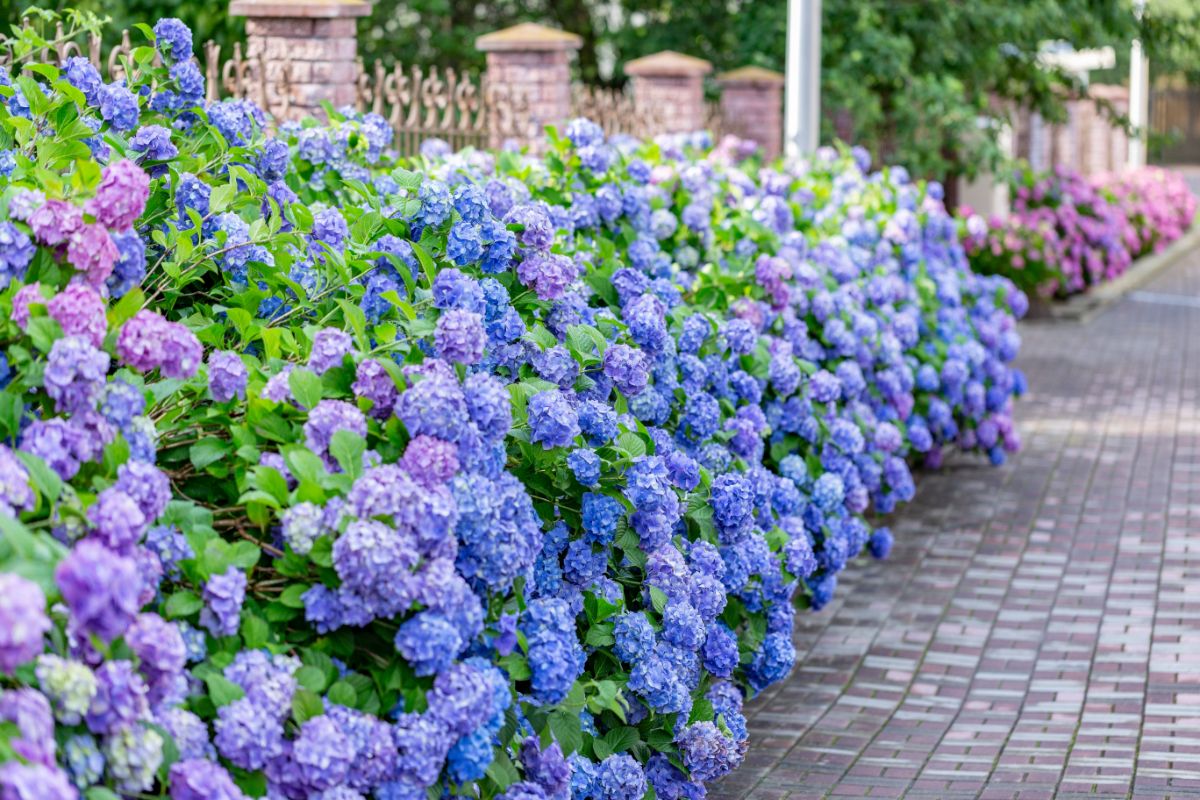
On our list is another perennial shrub that is easy to grow, known as Hydrangea. If you are a gardener or a garden enthusiast, you would have heard of Hydrangea, a trendy plant with wide varieties.
Some have lace-cap blooms, while some feature mop heads, others also enjoy climbing and act like a groundcover plant, and the rest are planted like shrubs. It has color varieties ranging from purple, blue, pink, white, and even sometimes green in different seasons.
This perennial shrub is an easy-to-grow and low-maintenance plant that thrives in full sun to partial shade. Hydrangeas are best suited to landscaping and offer the best prospect for growing in containers.
It can grow up to 3 to 20 feet tall and 2 to 12 feet wide (giant, isn't it?). It is perfect for lovely cut flowers and is hardy to zones 3 to 9.
4. Summersweet Clethra (Clethra alnifolia)

Native to the Eastern US, Summersweet Clethra is one of the top choices for any gardener looking for a beautiful perennial shrub that is very easy to grow. Hardy to -30 degrees Fahrenheit, the clethra alnifolia is a giant shrub that can grow up to 3 to 8 feet tall and 4 to 6 feet wide.
It produces straight and tiny panicles of white to pink blooms between June and August. Like most perennial shrubs in this list, summersweet enjoys full sun to partial shade conditions and survives in moderate and wet soils.
Again, pruning is necessary only when required and during the late winter season. This shrub features dense branches covered with flowers that draw pollinators like butterflies and bees.
A perfect prospect for shelter, especially if you need summer color. Summersweet also has dwarf cultivars such as the hummingbird, sixteen candles, a white dove, crystalina, etc.
5. Rose of Sharon (Hibiscus syriacus)
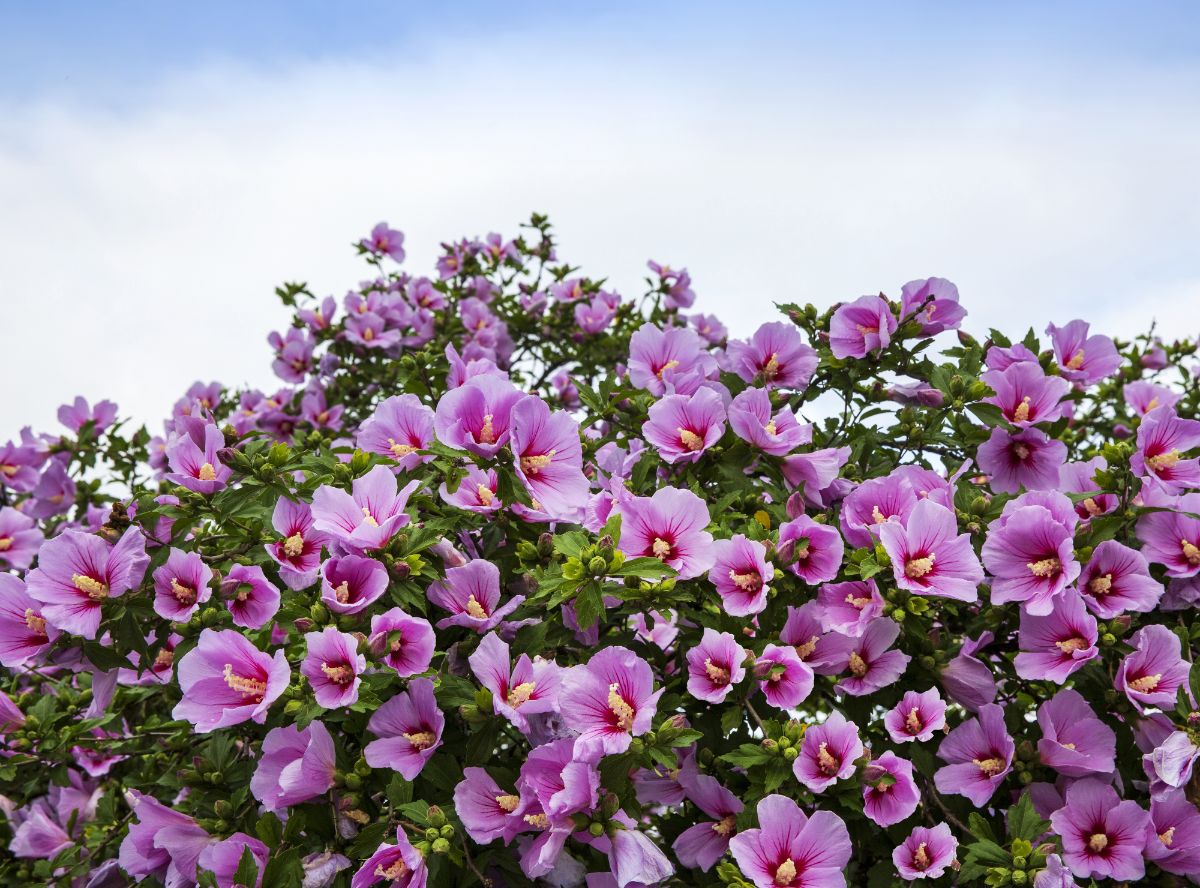
Only a second thought on its name will prove the uniqueness of the Hibiscus syriacus (as it is scientifically called). It is a highly tolerant flowering perennial shrub with various color blooms ranging from red to white and blue to lavender.
It produces beautiful flowers with an incredible stamen that draws different pollinators like butterflies and bees. Rose of Sharon is a tremendous late bloomer that fills the landscape with intensity during late summer and early fall and continues producing elegant blooms when other flowers fade.
Hibiscus syriacus is also a giant perennial shrub that can grow as tall as 10 feet and 5 feet wide. It thrives most in full sun to partial shade and can survive heat, pollution, drought, humidity, and poor soil. This lovely bush is also hardy to zones 5 to 9.
6. Beauty Bush (Kolkwitzia amabilis)

Another attractive perennial shrub that is easy to grow yet will brighten your garden is Kolkwitzia amabilis, popularly known as Beauty Bush.
Not only is it easy to grow, but it also grows speedily. This deciduous blooming shrub is in the honeysuckle group and thrives in moderate moisture and well-drained soil.
Beauty bush does best in full sun but can survive in partial shade. This shrub stands at 6 to 10 feet tall, features an arching, vase-shaped habit, and produces beautiful pink-color blooms with yellow throats in clusters blooming during mid-spring, invariably the exact timing of which will vary based on your region's hardiness.
The Kolkwitzia amabilis is a perfect perennial plant for making a hedge. However, the plant is resistant to pests and diseases despite its beauty and elegance. It also needs to be pruned after blooming.
7. Skip Laurel (Prunus laurocerasus 'Schipkaensis')
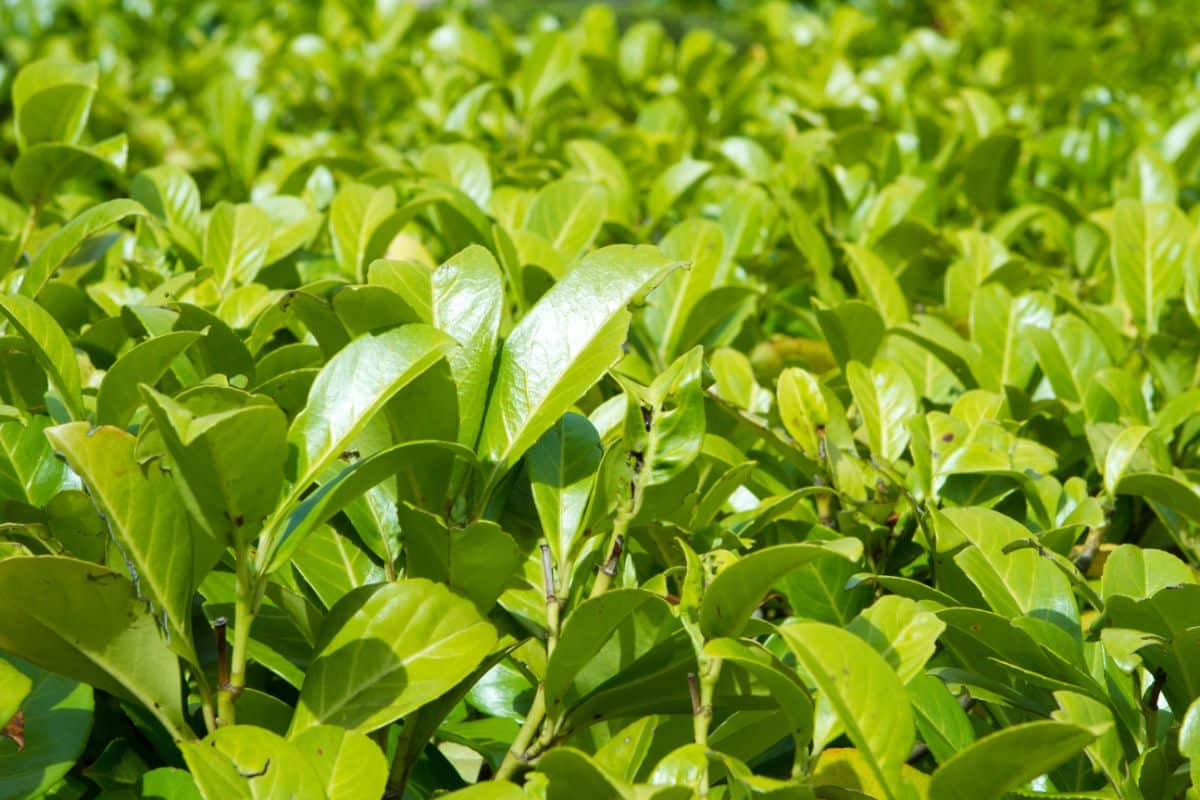
If you want to give your garden a big spark, you should trust this lovely perennial shrub, otherwise known as Schip Laurel. It is a glossy-leaved evergreen plant that a gardener can use for rapid-growing hedges. Scientifically known as Prunus laurocerasus, this lovely shrub is an easy-to-grow plant.
Also called Cherry Laurel, the schip laurel can increase into giant and narrow hedges and needs to be pruned just once a year, with occasional shaping if required.
It can grow as tall as 2 feet within a year, hence is widely considered among the rapid-growing plants that can serve as a shrub for privacy amid other garden privacy ideas.
Cherry laurel is hardy to zones 6 to 9, thrives in partial to full shade, and can tolerate any soil, thus providing a wide choice for establishing a dense hedge quickly. Again, this shrub creates beautiful and scented stalks of flowers and red berries during winter.
8. Flowering Currant (Ribes sanguineum)

Flowering Currant is the perfect plant for the beginner gardener, as it is one of the easiest to grow and will add brightness to your garden thanks to its beautiful color range.
Ribes sanguineum, scientifically called, is a great perennial shrub that will light up your garden by producing bright flowers during early spring.
Apart from being an easy-to-grow plant, it is also a perfect low-maintenance plant for gardeners preoccupied with other things. It is an excellent plant that thrives in moist and fertile soil and does best in well-draining mediums and full sun to partial shade conditions.
9. Mountain Laurel
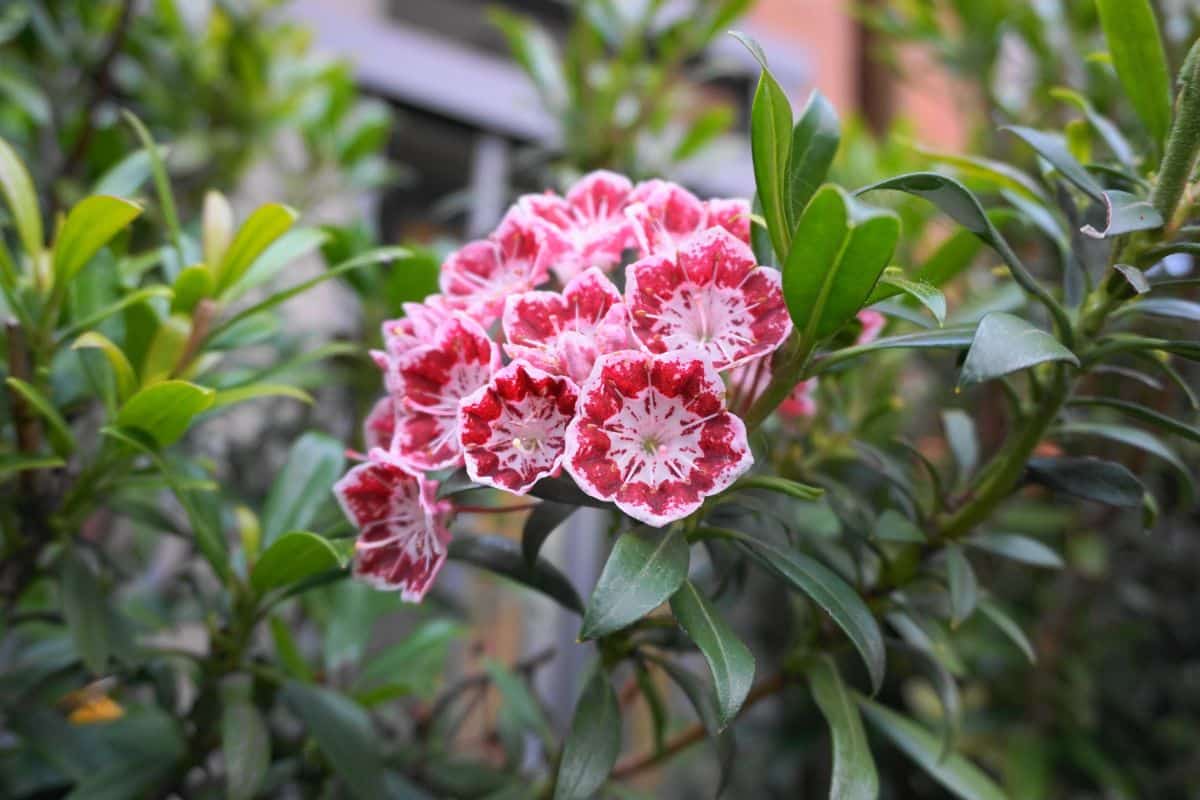
Are you looking for a plant that will add more beauty to your landscape? Look no further than Mountain Laurel. It is one of the top perennial shrubs that are easy to grow. This shrub can thrive in the shade, part shade, or full sun, but it depends on your climate.
For instance, it would be best to grow the plant in the shade or part shade in hotter summer regions, while the full sun is preferable in colder climates.
Mountain laurel produces beautiful pastel bloom clusters during early summer and features rich glossy green leaves, which look incredible yearly. The plant can be as tall as 7 to 15 feet and hardy to zones 4 to 8.
10. Darwin's Barberry (Berberis darwinii)
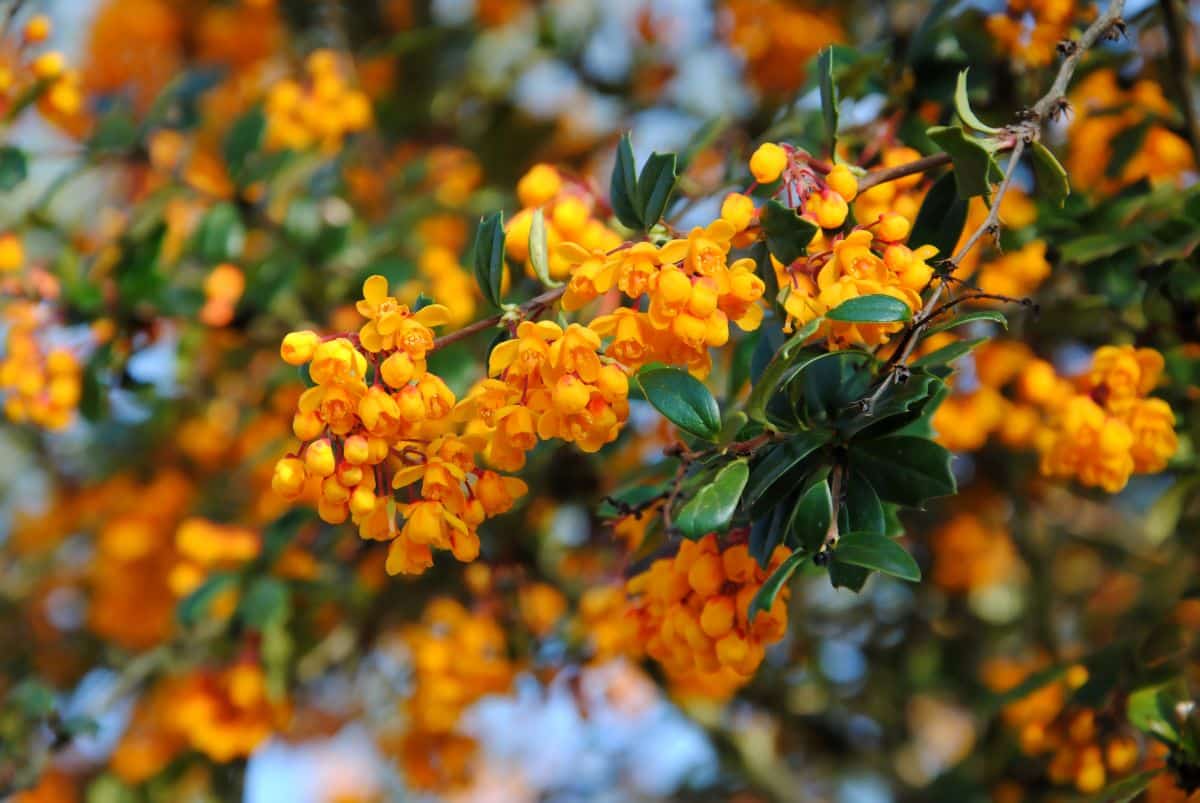
One of the few perennial shrubs that are very easy to grow, low-maintenance, and at the same time help to brighten your garden is Darwin's Barberry. It is a perfect evergreen option that features incredible bold orange-colored flowers during the spring.
These beautiful colorful flowers are what help to brighten up a shady area of a garden. Scientifically called Berberis darwinii, the orange flowers of darwin's barberry also come with lovely purple berries.
This plant thrives in full sun to partial shade and prefers well-draining soil conditions.
11. Puget Blue (Ceanothus)
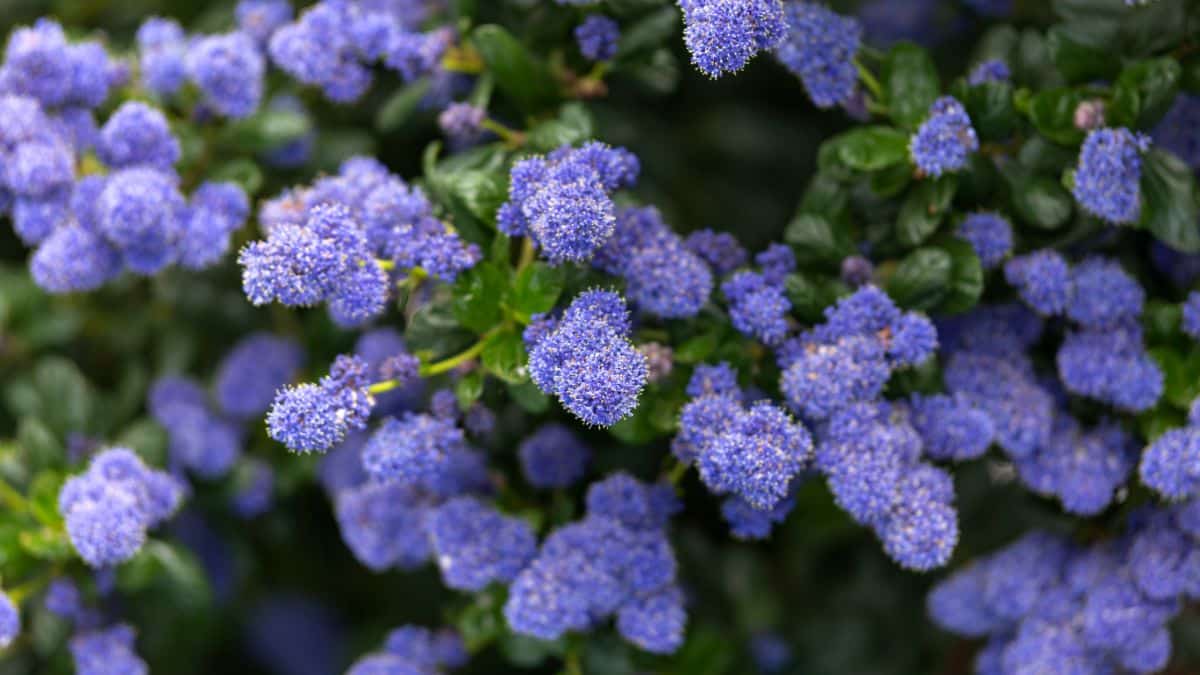
As long as perennial shrubs that are easy to grow are concerned, you can't look past this beautiful flowering specie, otherwise known as Puget Blue.
Apart from being an easy-to-grow plant, the Ceanothus, as it is scientifically called, produces plenty of attractive blue booms, hence its name, Puget blue.
Again, it is a nitrogen-fixing plant that can enhance the fertility of your garden without much of your effort. You can consider this Puget blue amongst easy, low-maintenance plants as it thrives in full sun to partial shade conditions and can tolerate various soil types, depending on your region.
12. Bluebeard Caryopteris (Caryopteris clandonensis)

Another perennial shrub that is easy to grow is Bluebeard Caryopteris which is popularly known for its mid to late summer flower productions, unlike so many other shrubs that produce in the early spring.
It features lovely stems of small leaves, surrounded by beautiful blue flowers in each section of the leaves.
Scientifically called Caryopteris clandonensis, this one-of-a-kind shrub doesn't just feature lovely blooms but also has some sweet fragrance that even attracts birds.
However, it is still a deer-resistant plant that prefers full sun and can grow up to 1 to 4 feet tall and 2 to 4 feet wide. It is drought tolerant and hardy in zones 4 to 9.
13. Butterfly Bush (Buddleja)
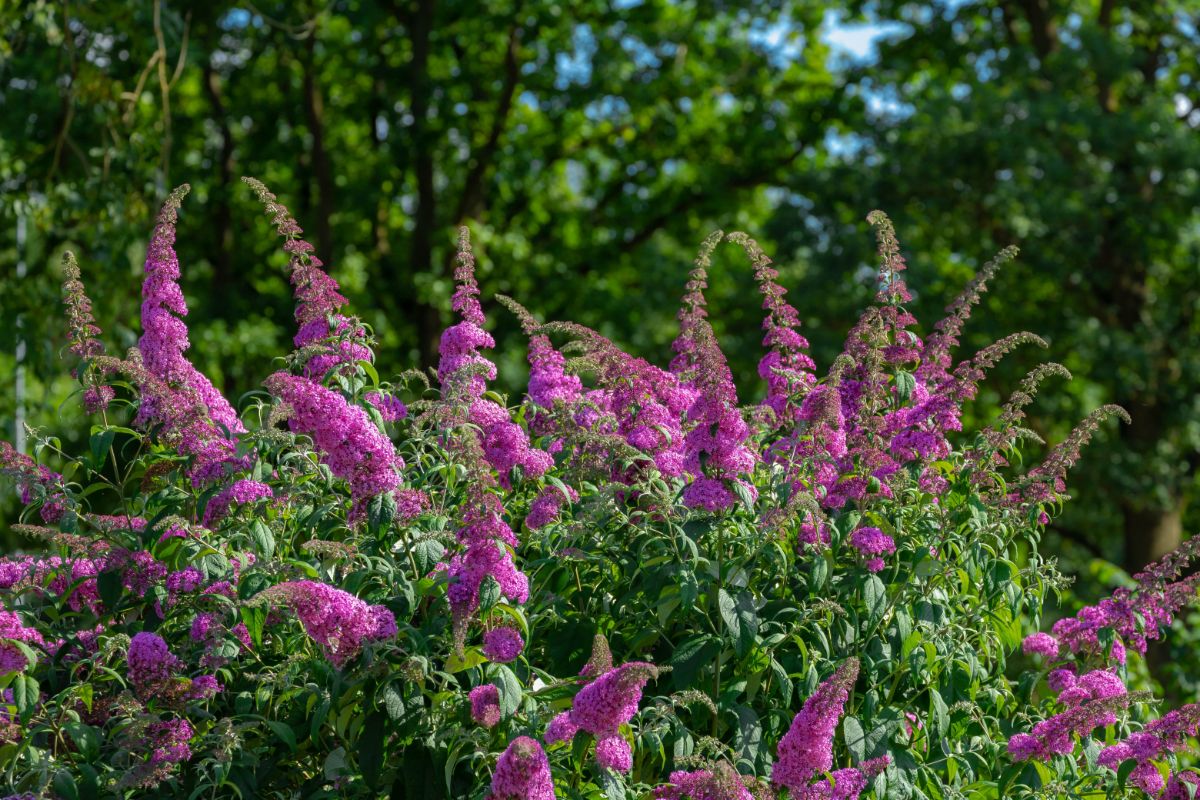
Butterfly Bush is a perennial shrub that has always been a favorite of most gardeners for landscapes and perennial gardens.
It is one of the easiest plants to grow, which also requires low maintenance yet with a high probability of producing a substantial amount of colorful blooms that can brighten your garden.
Buddleja is hardy to zones 5 to 9 and can tolerate many conditions. It can snowball to 10 feet giant plant and creates beautiful drooping panicles of flowers from summer to fall. However, its smaller varieties, like Adonis Blue, will stay around 4 to 5 feet tall.
Meanwhile, pinching off faded flowers will cause extended blooming, and when you prune heavily, you will be rewarded with heavy blooming the following year.
Butterfly bush is very adaptable, so the best thing to do is prune it hard during late winter or early spring and ensure you feed it lightly once it starts experiencing some growth.
14. Annabelle Hydrangea (Hydrangea arborescens 'Annabelle')
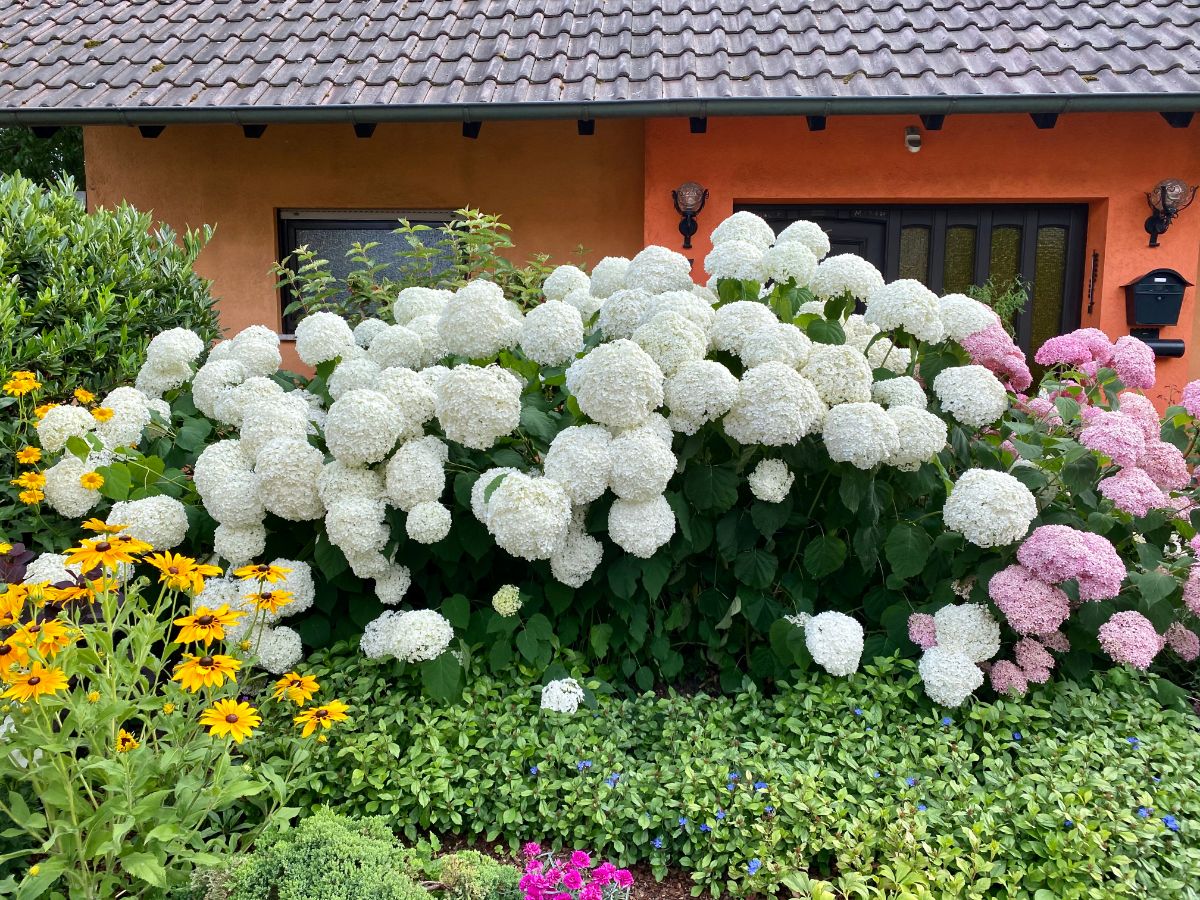
Ask any gardener about Annabelle Hydrangea, and he will tell you that it is one of the few perennial shrubs that make for a vibrant garden even as it is easy to grow. This plant is a deciduous shrub considered among the most reliable flowers in the hydrangea family.
Popular amongst gardeners as smooth Hydrangea, Annabelle, as it's fondly called, is native to North America and hardy to -40 degrees Fahrenheit. It produces flowers from June to September and features big foot-wide balls of white-colored blooms, fading to light pink or green as the season progresses.
This plant flowers on new wood; therefore, you must be less bothered about the buds freezing out. You can prune in late winter to early spring by cutting the plant back to a height of 12 to 18 inches, thus promoting good plant form.
Anabelle can survive wet and dry soil and grow up to 3 to 4 feet tall. It is best suited to partial shade as full sun is unfavorable.
15. Bottlebrush Buckeye (Aesculus parviflora)
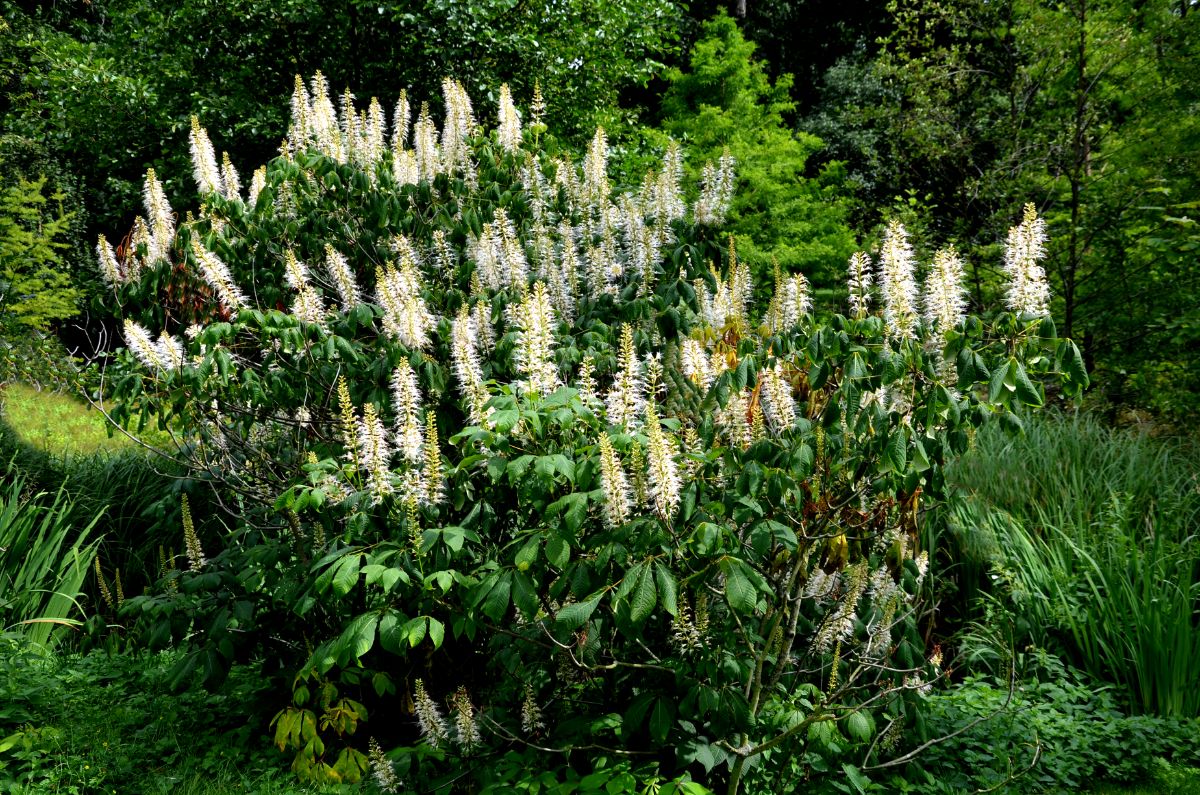
Suppose you are looking for an excellent perennial shrub to add to your beautiful garden collections.
In that case, you should consider the Bottlebrush Buckeye variety as the perfect fit to add brightness to your garden. The most exciting part is that the plant is easy to grow and is even a low-maintenance variety.
Native to Southeastern America, this deciduous shrub is very hardy to -20 degrees Fahrenheit and is a perfect option for hedge planting. It is a giant plant at 8 to 12 feet tall and 8 to 15 feet wide and more productive in June and July.
Bottlebrush Buckeye produces upright spires of white blooms at least 12 inches and rises above the foliage in a fantastic display.
Sometimes, these blooms come with buckeye nuts, even though it doesn't always come. Its fall foliage color is a bright yellow in color and is resistant to pests or diseases. Pruning is best just after it blooms.
16. Daphne Odora (Aureomarginata)
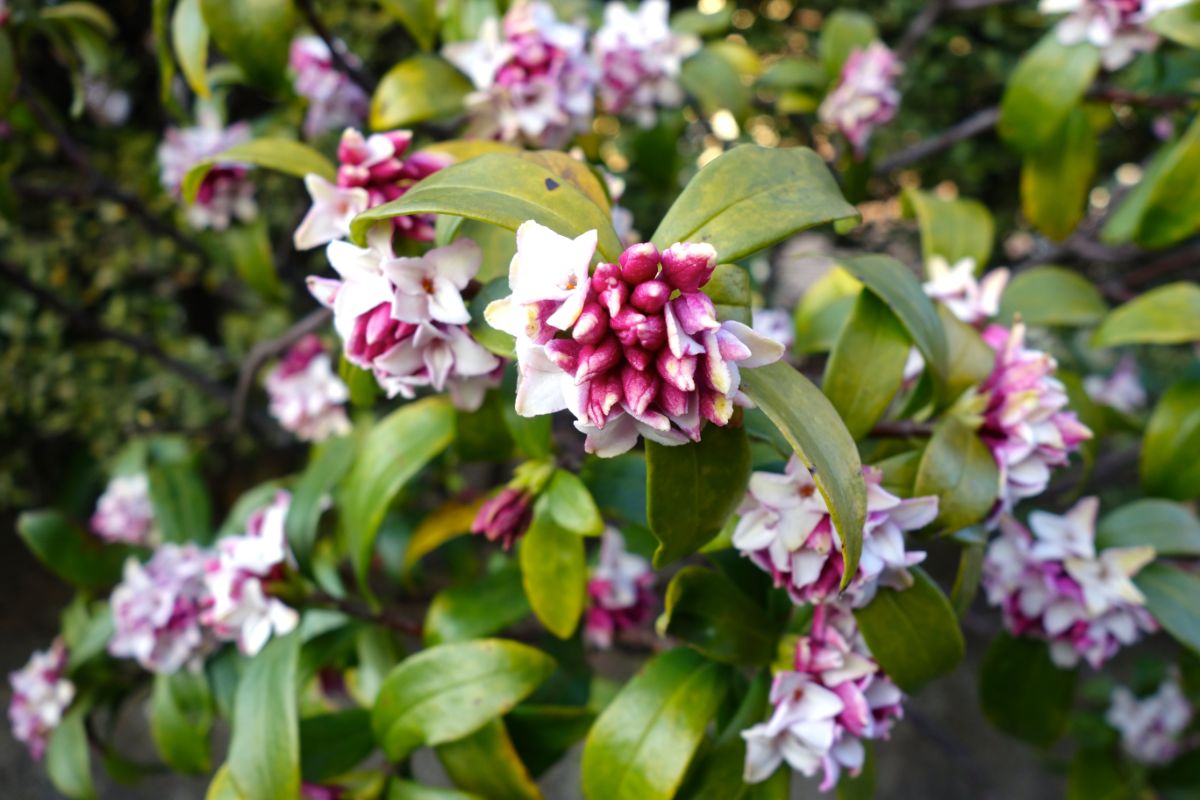
Are you looking to double the stunning nature of your garden with gorgeous flowers that also come with heavenly scents? Then the best option to go for is Daphne Odora.
As long as nicely scented plants go, daphne is among the best. You can go for its evergreen variety, which will see its glossy leaves add year-round attraction to your low-maintenance flowerbed.
You can just plant this plant and allow it to do its best, as it doesn't require unnecessary pruning other than tidying up any fallen leaves around the plant to tidy up the area. Its lovely scented variety, Aureomarginata, forms clean, dense, round-shaped flowers that need little to no care.
It is also a robust and glossy evergreen variety that produces blooms of pink and white color combinations that flourish from January to March.
Once the plant is done blooming, it creates a very red berried fruit. This perennial shrub is perfect for small gardens, as it remains contained and won't spread as it can only grow up to 1.5 meters.
17. Red Robin (Photinia)
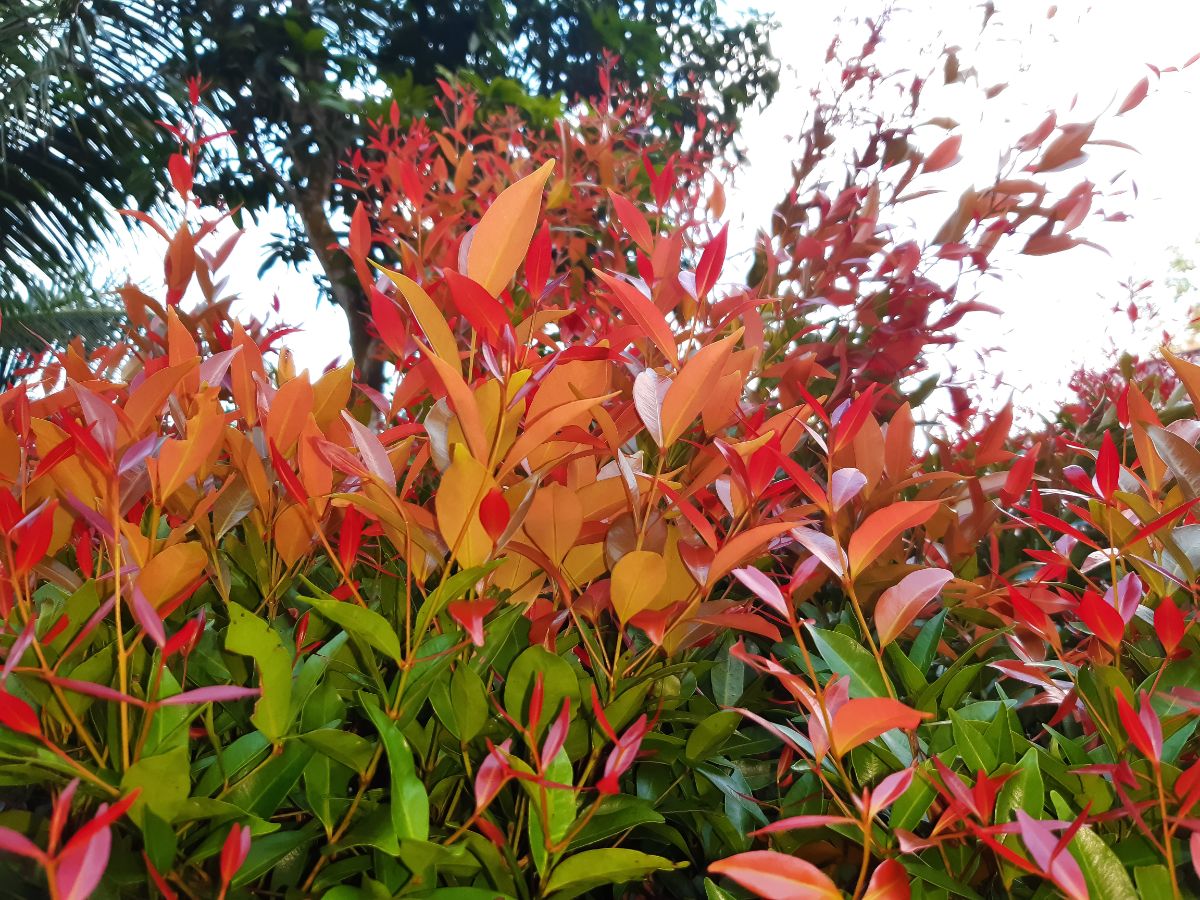
When it comes to easy-to-grow perennial shrubs, Red Robin is among the top varieties, especially as it offers a stunning display in the garden and easy maintenance. Photinia, as it is scientifically called, does not require unnecessary pruning, as you can only trim about 15cm off the top of the plant in late spring or early summer.
This activity will help enhance new shoots of young leaves and enable the plant to maintain its healthy shape. During early spring, you can boost the plant by layering on well-rotted garden compost or manure around the plant's base.
Red Robin features flashes of bold red foliage, which offers an excellent choice for the garden irrespective of the season.
The leaves will become more audacious in their red ambiance depending on the plant's sunny position, thus becoming more attractive. At this point, the sun tends to shine on its fiery edges to produce a warm glow in the garden.
18. Chinese Paperbush (Edgeworthia chrysantha)

Another perfect easy-to-grow perennial shrub that can add glow to your garden is the Chinese Paperbush. It is an incredible winter-flowering shrub that produces round clusters of bright yellow blooms from February to April. This shrub is highly tolerant of full sun but can survive partial shade.
Chinese Paperbush can grow up to 4 to 6 feet tall and wide, and its showy winter interest makes it the favorite of many perennial gardeners. Edgeworthia chrysantha is hardy to 0 degrees Fahrenheit and thrives in protected areas where it can gain shade in hot summer regions.
Native to Asia, the blooms of this lovely plant are displayed on bare stems and are accompanied by moderate green leaves that are gray-green underneath. Do not overfertilize Chinese Paperbush, as it can survive under minimal nutrients, which is why it is a low-maintenance perennial shrub.
19. Maejima Daphne (Daphne odora 'Maejima')
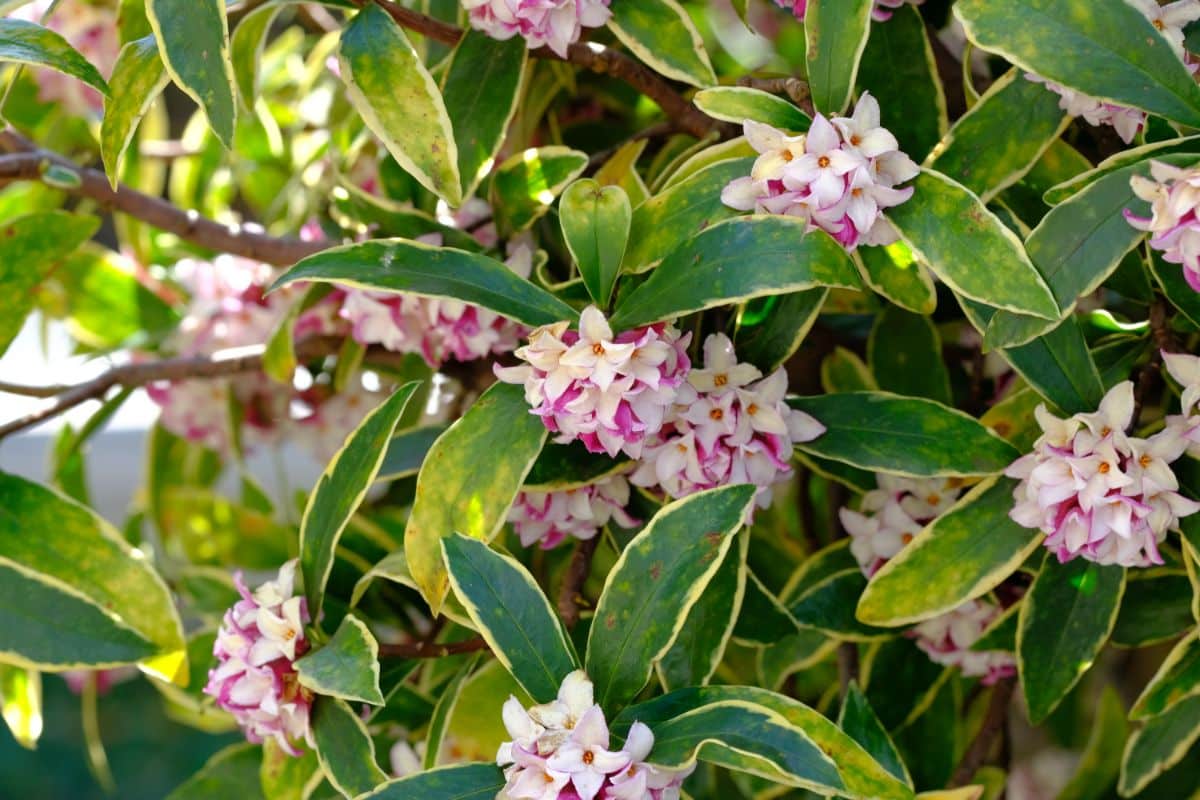
Daphnes, especially the maejima daphne odora variety, mainly appeal to gardeners thanks to their lovely scent. It is a shorter variety that features variegated foliage and rose-pink bloom clusters, which produce more beautiful evergreen and reliable flowers during the winter.
It is most suitable for warm climates since it is hardy to 0 degrees Fahrenheit temperatures. Maejima daphne is a cultivar native to Europe and Asia and can grow only up to 3 feet tall. Meanwhile, ensure you do not unnecessarily prune this plant to avoid hampering its growth.
20. Viburnum (Viburnum opulus)
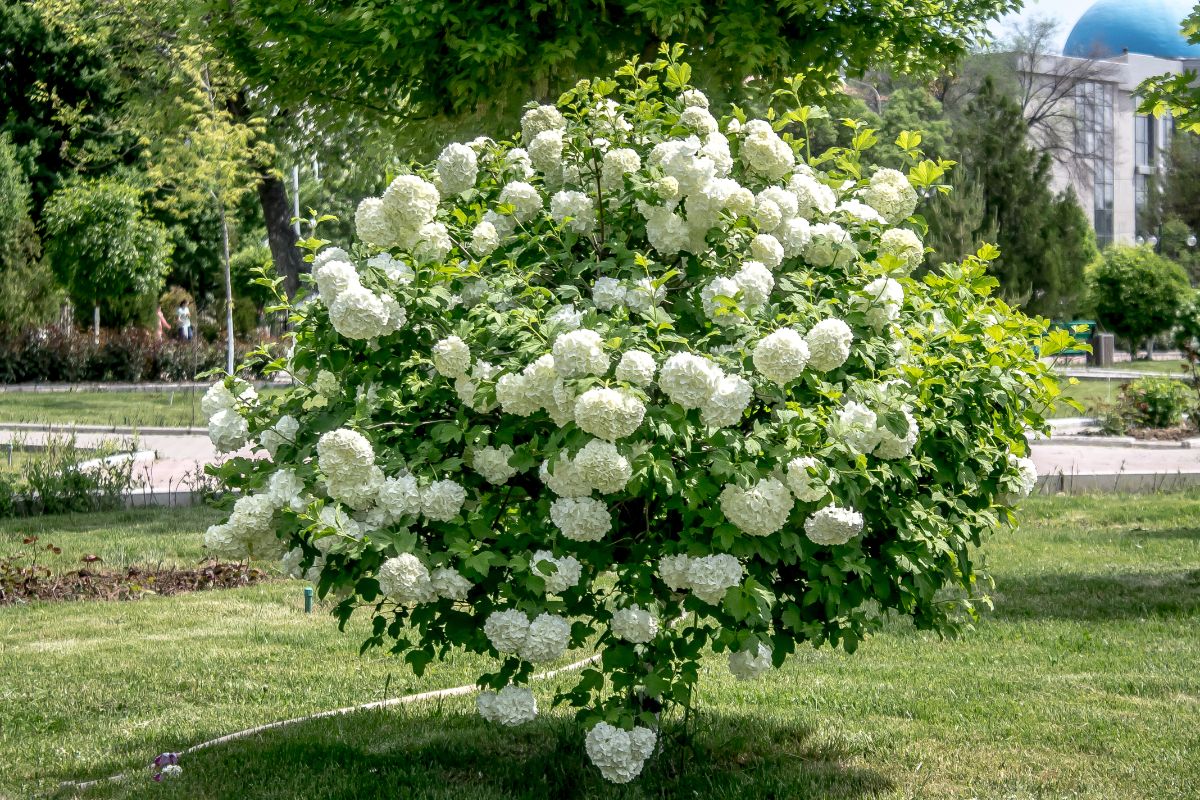
Viburnums are another drought-tolerant perennial shrub that is easy to grow and produces springtime blooms. It is a popular landscaping specie among gardeners, especially for its low-maintenance and is one of the easiest to grow. Viburnum is of different species, ranging from evergreen to deciduous.
However, they all produce bright white or pinkish blooms that range from flat floret clusters to round-shaped snowball varieties. Wide varieties of viburnum are resistant to pests and deer and are tolerant to drought.
Their flowers come with attractive foliage and showy berries, which draw birds. They prefer partial to full sun and are hardy to zones 2 to 9.
21. Camellia (Camellia japonica)
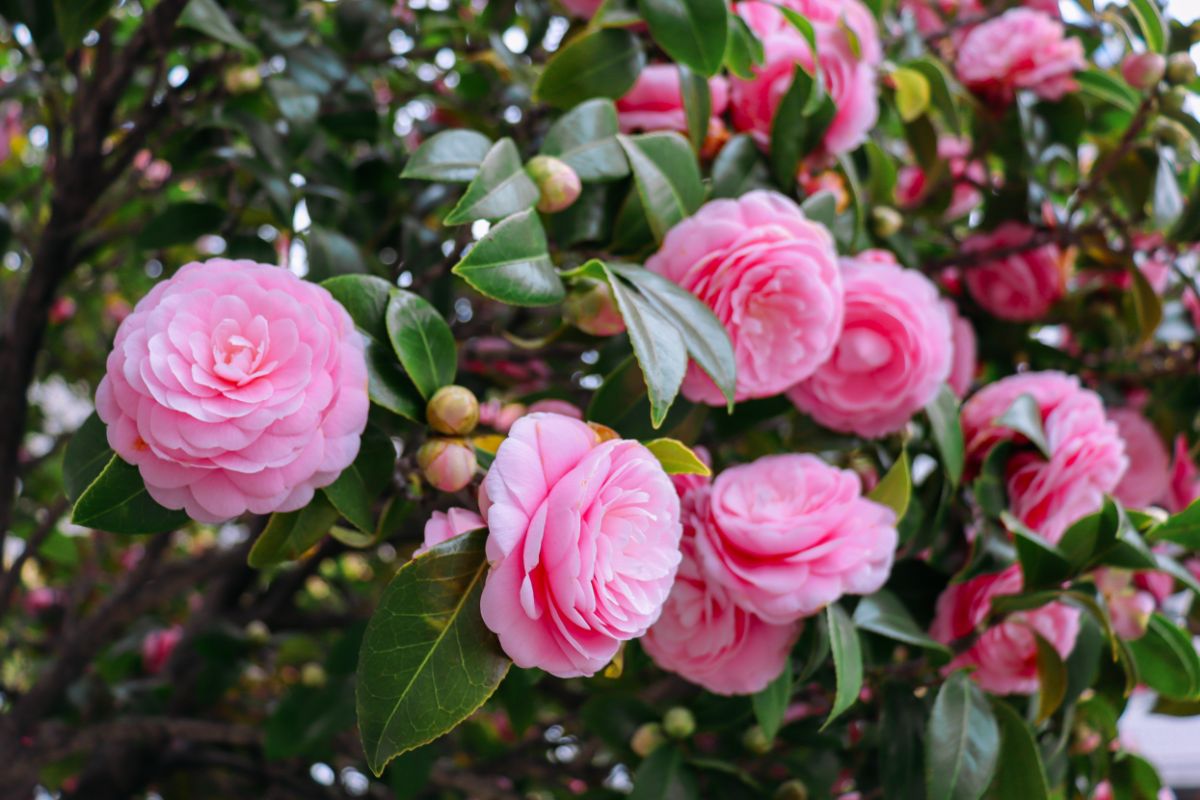
Another easy-to-grow perennial option for a great garden is a southern ornamental shrub, otherwise known as Camellia japonica. This variety has vast collections of species that come with dark, glossy leaves and produces unique blooms from spring to fall.
Some of these species even feature delicate or vibrant pink shades, while others come with creamy white color. Camellia is a giant shrub that can grow up to 8 to 20 feet tall and is hardy to zones6 to 10.
It is an evergreen shrub that is perfect for natural privacy or grown as a patio shrub. It prefers both sun and shady positions, depending on the region.
22. Rhododendron (Rhododendron ferrugineum)
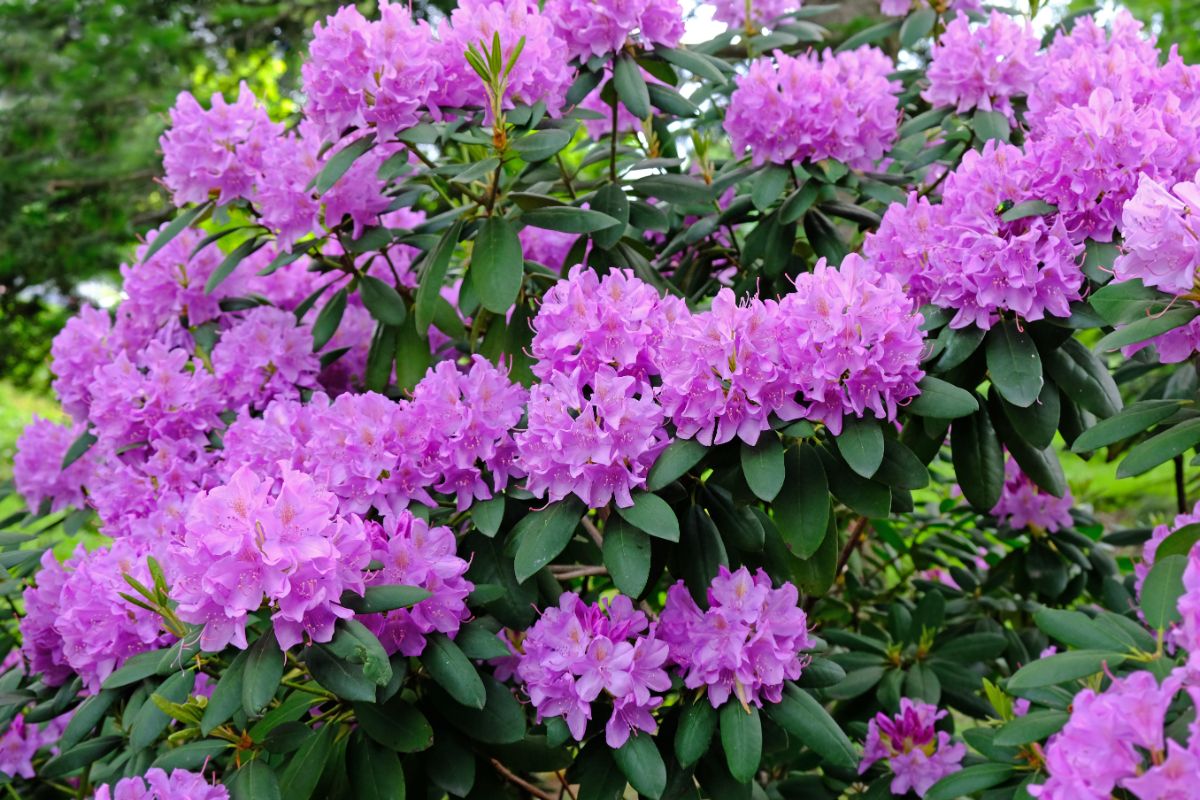
Talk of plants that will give your landscape an entirely different but beautiful shape is Rhododendron. It doesn't matter where it is positioned in this list; it is still widely considered among the best perennial plants that are favorites of many gardeners with its beautiful flowers.
However, you might be tempted into thinking that rhododendrons need a serious skillset to grow or maintain, but the reverse is the case. They are easy to grow and require little to no attention to produce attractive blooms, especially in partial shade.
This shrub produces a wide selection of bright flower colors available in different sizes ranging from dwarf to giant feet tall species. Rhododendrons are perennial shrubs that are hardy to zone 4 and thrive in well-draining mediums.
23. Oak-Leaf Hydrangea (Hydrangea quercifolia)

If you are looking for a plant that will give you less stress and, at the same time, brighten up your garden with its beautiful displays of gorgeous blooms, then you should look no further than Oak-Leaf Hydrangea.
It is another easy-to-grow and easy-maintenance hydrangea variety native to the Southeastern United States.
This shrub is most famous for its foliage featuring a shape resembling oak trees' leaves. It thrives in full to partial shade, and even though it blooms in the summer, it features color-changing foliage and dried flower heads that benefits the garden until the fall season.
24. Oregon Grape (Mahonia aquifolium)
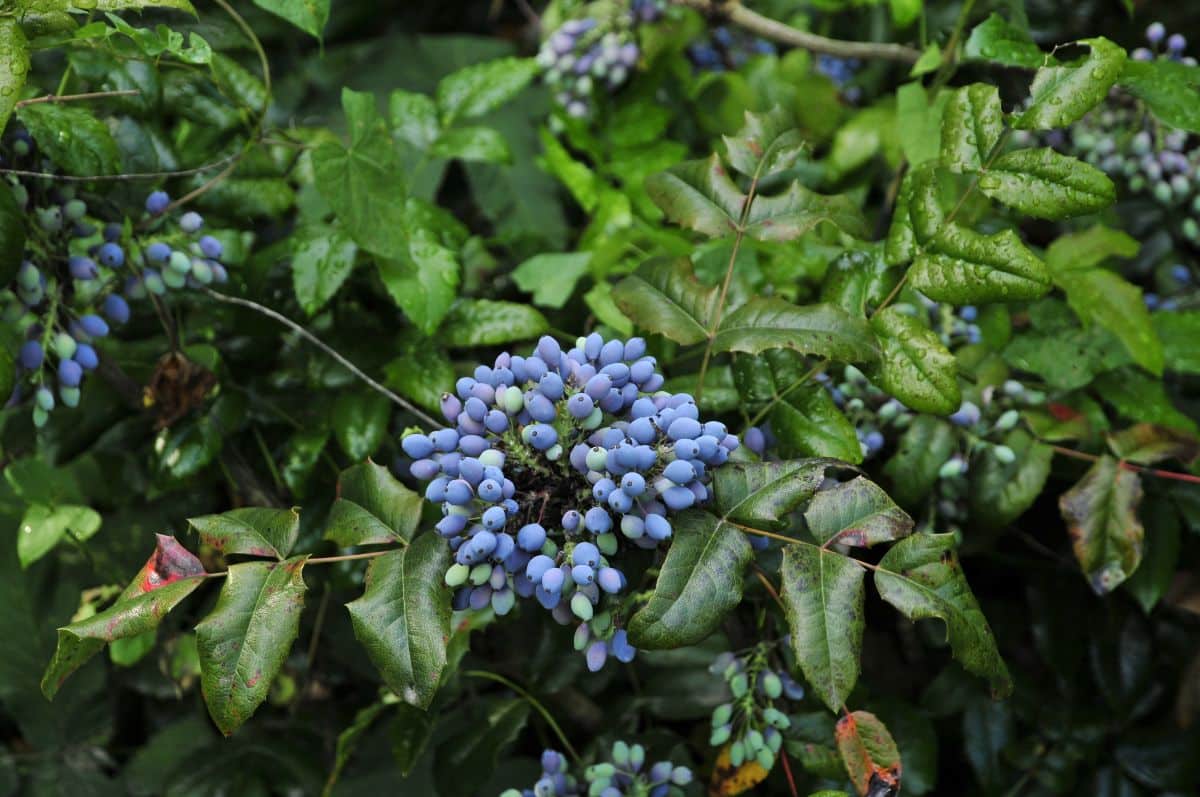
The Mahonia species, the Oregon Grape, features a wide variety of low-maintenance shrubs that also require less growing stress. They are evergreen perennial shrubs that feature prickly leaves and bear rich spires of bright yellow flowers in late winter.
Immediately after its flower production, the Oregon Grape species produces purple berries. This plant thrives in partial to complete sun conditions and prefers a well-drainage system. Do not prune unnecessarily to avoid hampering the plant's healthy state.
25. Sea Berry (Hippophae rhamnoides)
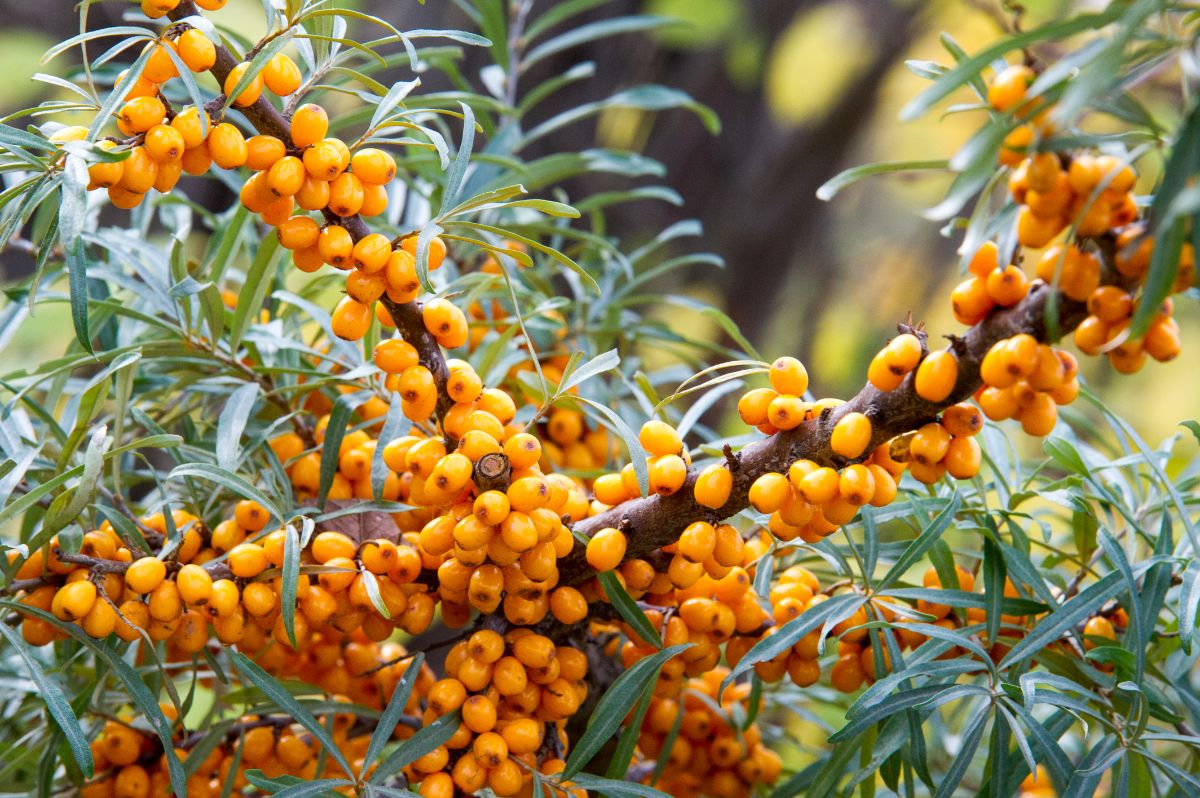
Sea Berry is not only known for being an easy-to-grow perennial shrub but also for its rapid-growing tendencies, which can add brightness to your landscape. It is most suitable to grow in zones 3 to 8 and thrives in windy coastal gardens.
Also known as Sea Buckthorn, this hardy deciduous shrub is both ornamental and grows edible berries. In other words, it decorates the garden with its colorful flowers and produces fresh, tasty, bright orange, vitamin C-filled berries that are most commonly used in jams, juices, and skin care.
Seaberry grows like bushes, hence is most suitable for hedges. It is a giant shrub that can grow as tall as 30 feet and doesn't need unnecessary pruning. When the male and female sea berries are jointly sown, the shrubs tend to begin fruit production after four or five years.
How to Grow and Care for Perennial Shrubs
As you enjoy your perennial shrubs thanks to their fantastic foliage or gorgeous flowers, the main thing you are purchasing is the roots since they are crucial to why the plants return every year. Meanwhile, almost all perennial shrubs that are easy to grow are very hardy plants, requiring little to no attention.
They are drought and heat-resistant and naturally resistant to deer and other animals. A closer check on our top picks of perennial shrubs above will tell you that they all prefer sunny or partial shade areas. Again, since they are drought-resistant, these shrubs do not need too much or steady watering.
They can even survive a little bit of neglect. With the following care tips, you can ensure your perennial shrubs get off to the best possible start for the desired result.
Natural Habitat/Lighting Requirements
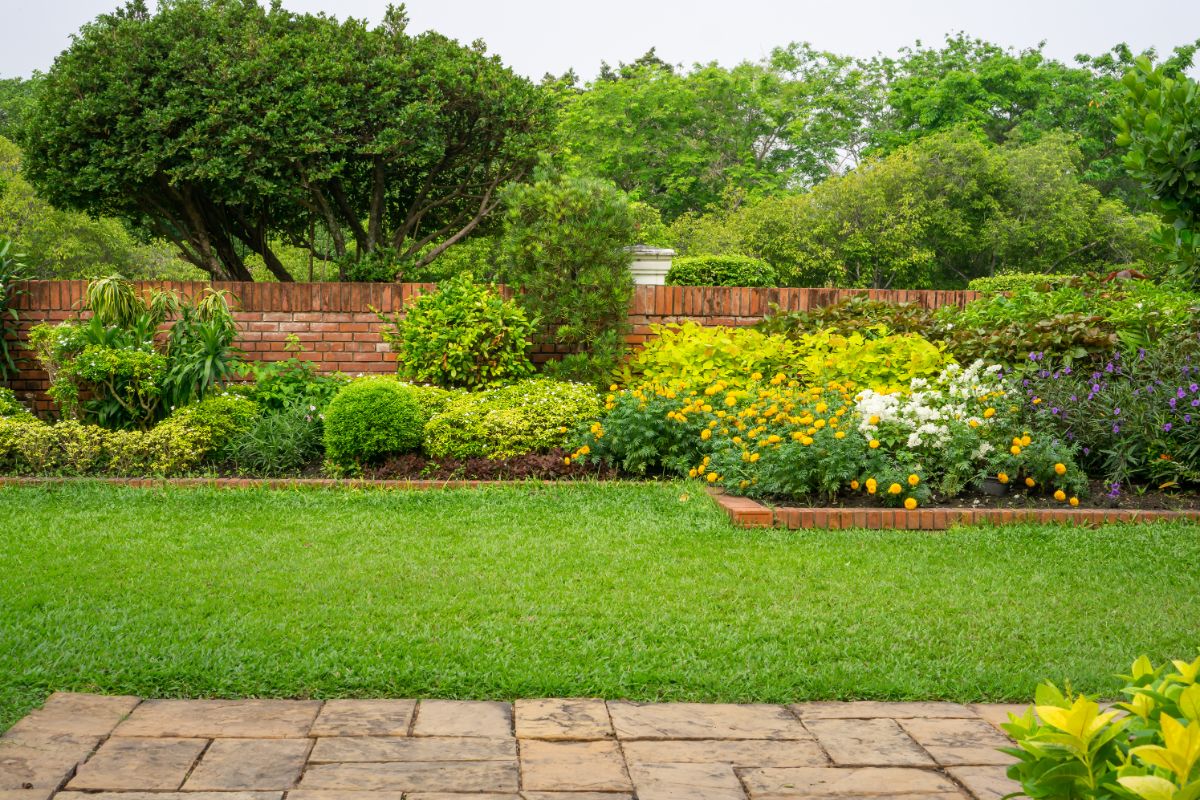
Perennial shrubs that are easy to grow have their natural habitat mainly in the tropical areas of North or Southeastern America, and some parts of the Asian regions where they are used to the sun are partial shade at the very least.
Therefore if you want to get the best out of your plants or maintain their healthy state, you must imitate their natural wildlife, and this means positioning them in the area of your home or garden where they can get full sun or partial shade (if the sun is too hot).
Container-grown Perennials
The simplest-growing perennial shrubs are grown in containers and are always readily available. Their planting requires digging a hole a bit wider but not more profound than the pot the newly-bought perennials arrived in.
Loosen the roots and disperse them whenever the plants become rootbound. Then, you can adequately position the soil around the roots and water.
Bare-root Perennials
It wouldn't be bad to go for bare-root perennial shrubs, especially since they are more affordable than container-grown versions of similar plants.
They are often available in early spring and sold as roots, usually packed in peat moss or the same material. Ensure you soak the seeds in water before cultivating them in the ground.
Perennial Shrubs General Planting Tips
If you want your plant to yield better results as desired, you must water them well after planting them. After that, lay a 2 to 3-inch deep layer of much over the soil around the new plants, as it will enable the earth to retain moisture and prevent weeds from popping up.
Several perennials like delphiniums and peonies need support through staking. So, anchor single stems by fixing a rod or sturdy stick into the ground and tying the stem.
Make sure clump-forming plants with more than one stem remain erect by planting them via a hoop. Regular deadheading and division are necessary to keep the plants healthy.
Deadheading Tips
To deadhead means cutting the faded blooms off your plants to enable them to look better and prevent them from setting seed. In this case, you will hardly witness a mess from your plants or shrubs seedlings in your garden.
Fortunately, several perennial shrubs react to deadheading activities by growing more flowers. Critical instances may include the likes of thread-leaf coreopsis, delphinium, veronica, yarrow, and even phlox.
Dividing Tips for Perennial Shrubs
Dividing is the best propagation method for perennial shrubs. The most exciting thing about perennial shrubs is their tendency to grow larger and better yearly. However, most tend to crowd themselves out if they become too large.
Therefore, if you want them to continue performing well, uproot them and split them into smaller chunks every three or four years.
Meanwhile, the best time to carry out this activity, especially for most perennials, is during early spring and fall. But do not try division for other perennials like bearded iris and hosta, as they need to be divided during the summer season.
Watering Tips
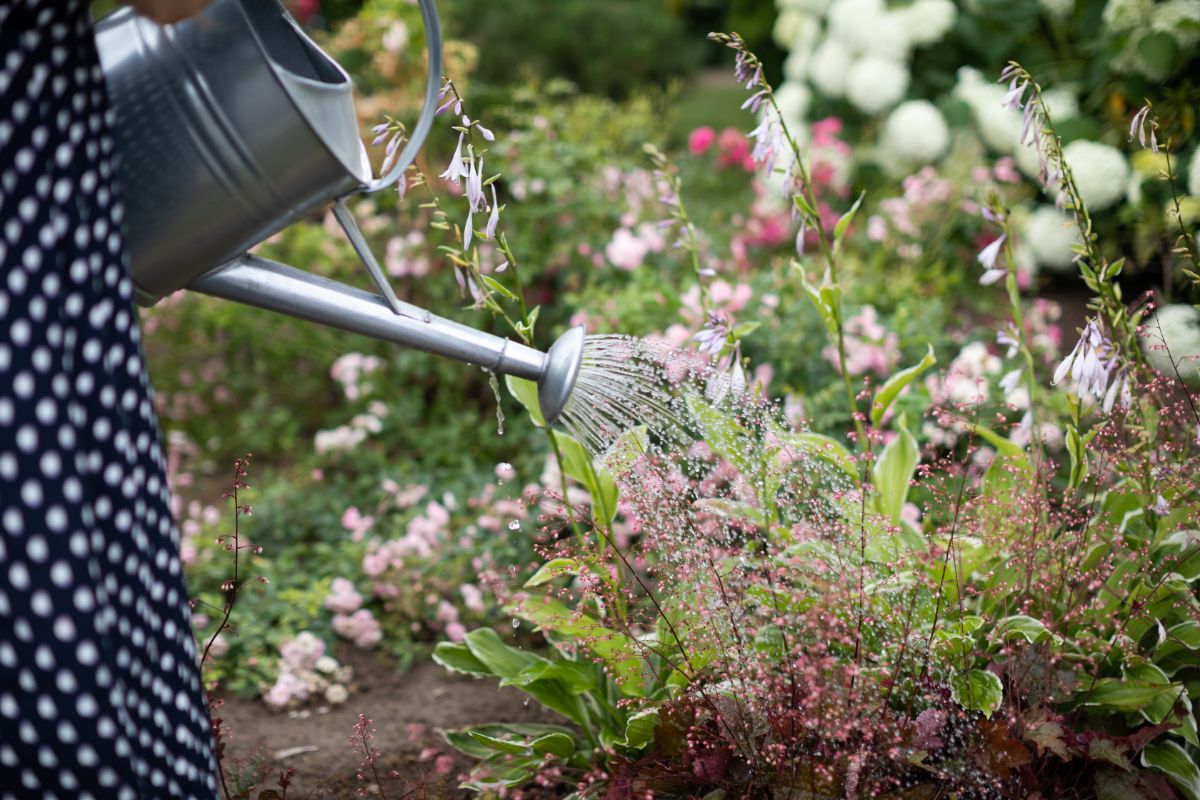
While some perennial shrubs require little to no watering, others must always stay moist. In other words, there is no specific rule for watering perennials. Therefore, to ensure that your plants maintain a healthy state, you group them based on their watering requirements.
Some perennials are susceptible to a common disease known as powdery mildew, which creates a gray or white fuzzy growth on the leaves.
You must prevent this disease and several others; ensure you water your perennial shrubs at dawn or early afternoon hours and with a soaker hose, not a sprinkler.
However, whichever perennial shrub you are planting, ensure you keep them sufficiently watered during the first year, as it enables them to grow healthier and become more established.
Soil Tips
By now, you should know that every perennial requires well-drained soil, whether those prefer moist soil or thrive on more dry soil.
In other words, ensure that the earth is well-drained and doesn't retain too much water, to avoid damaging the roots. Also, ensure you use the potting mix required for each perennial shrub.
Feeding Tips
For gardeners with rich soil, there won't be any need for extra feeding; the same goes for those that amend their soil regularly with compost or other kinds of organic matter.
However, if you have poor soil, that's where you need fertilizing, but moderately. Here, the best would be a general-purpose fertilizer and follow appropriate instructions on the packaging.
Winter Care Tip
Several perennial shrubs are reliably cold-hardy and, therefore, would not require special winter care. Yet, it would help if you spread a layer of mulch on them once the soil freezes to avoid winter damage during a severe frost season.
Several gardeners prefer to keep the dead stems of their perennials standing winter long as many of them serve as food for birds. In snowy regions, perennial shrubs can help to attract snow, which serves as one of the best winter mulches.
Frequently Asked Questions
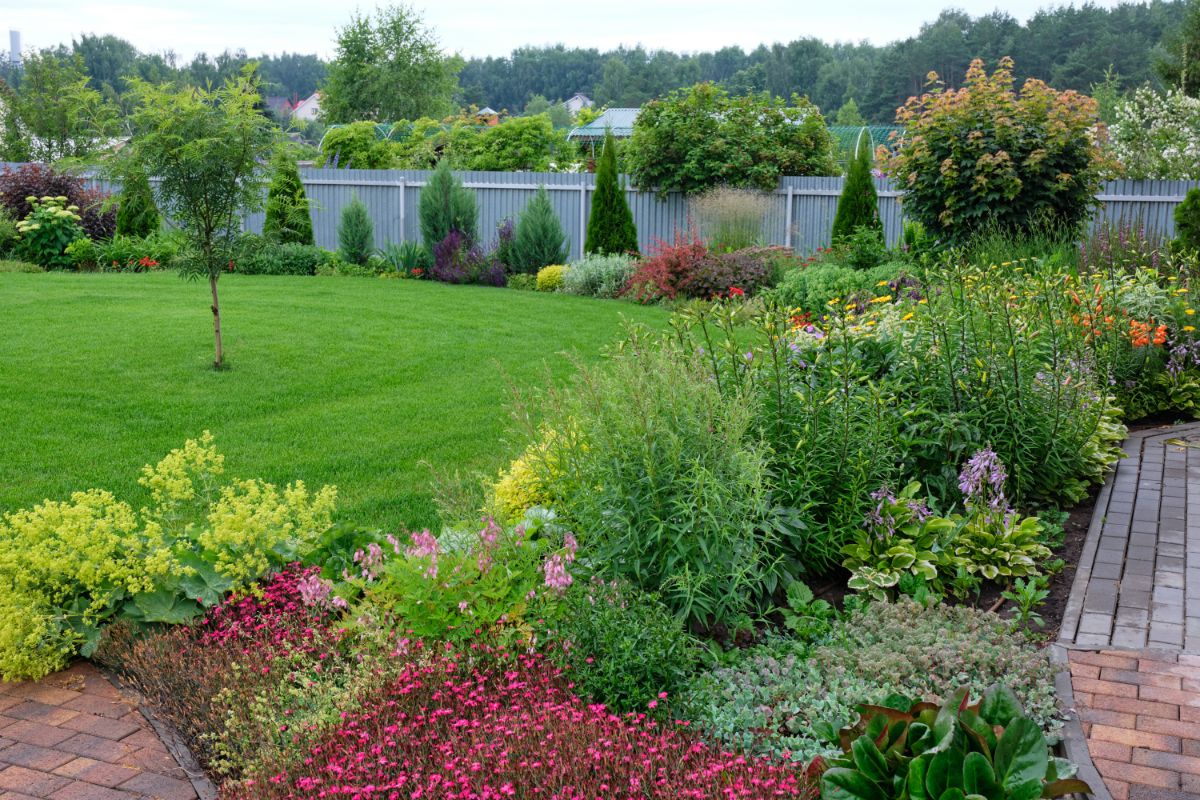
What is the most manageable perennial shrub to grow?
There are many easy-to-grow perennial shrubs. But to help your decision-making, you can go for the ones considered the easiest, namely, Camellia (Camellia japonica), Rhododendron (Rhododendron ferrugineum), Weigela (Weigela florida), Summersweet (Clethra alnifolia), etc.
What is the prettiest perennial shrub?
You can consider Oakleaf Hydrangea as the prettiest perennial shrub. It is an ultimate three to four-season shrub, which is at its peak in fall, during which it offers the best fall-foliage trees a good value for their money. It also produces enormous flowerheads during the summer.
What is the longest-lasting flowering shrub?
The butterfly bush possesses one of the longest-lasting blooms of every garden plant. They appear to never be without blooms from early summer to autumn, thus making them perhaps better referred to as continuous bloomers over rebloomers, as unlike other perennial shrubs in this list, they seem to never really take a break.
What is the best perennial shrub for the front of the house?
Several perennial shrubs can be suitable for the front of the house, but you can consider the likes of Boxwood, Roses, and Hydrangea best for the front house.
What is the fastest-growing perennial shrub?
The fastest growing perennial shrub is Ligustrum x Tribolium, a deciduous or semi-evergreen shrub that can grow up to 3 feet yearly. It has dense, dark, glossy green foliage that makes a perfect choice for hedges and privacy screens.
Conclusion
The list of perennial shrubs that are easy to grow goes on and on. Therefore, all you have to do is to pick one or a few from our top list. Don't forget that selecting the right plants for the right areas is crucial to creating a low-maintenance garden.
So, the place you live matters when choosing plants, as it gives them better chances of staying healthy and requires little effort on your part in growing them as well as their maintenance.




